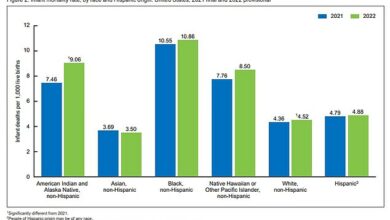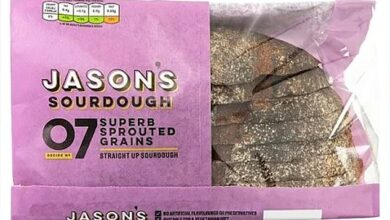Do you have food allergies? Here’s how to travel safely.

For the 33 million Americans managing one of the most common nine food allergies – including milk, eggs, nuts, wheat, soy, sesame and various types of fish – traveling safely can be a challenge, but it’s getting easier.
In the skies, where airlines say they can’t guarantee completely nut-free flights, the recently enacted Federal Aviation Administration Reauthorization Act will add epinephrine injectors to planes over the next two years and provide additional medical training for crew members.
On site, hotels and restaurants are also personalizing meals, offering menus with allergen symbols, improving staff training and establishing better food handling processes.
But it’s still crucial that you advocate for yourself. As a gluten-intolerant person and the parent of a child with a severe peanut allergy, I’ve learned simple and effective ways to eat safely and reduce the risk of a reaction when you’re away from home.
Pack to protect yourself
Consider bringing allergy-friendly snacks for your travels. Some reliable brands that are free of peanuts, nuts, gluten, and dairy include Well made And Enjoy life(Just be sure to check all ingredient labels to be sure.) These portable products include snack chips and granola bars. For travel within the United States, you can also store fresh fruit in resealable bags with reusable mini ice packs. These are allowed in carry-on luggage, but the cooling packs must be placed with other liquids when going through security.
If you’re traveling with an epinephrine injector, put a tracker like an Apple AirTag or Tile in its case and pack it in your carry-on. Then, set an alert to notify you if you forget your injector at home or lose it while traveling so you’re never without it. The Transportation Security Administration limits passengers to two injectors, which must be kept in the original container with a visible prescription label.
The Food and Drug Administration also recommends carrying cleaning wipes. Unlike hand sanitizer, sanitizing wipes can remove up to 99 percent of allergens, including peanut remainsfrom surfaces. This can help protect you from cross-contamination. Make sure to wash your hands afterwards to avoid direct contact.
Tell your hotel what you need
The Americans with Disabilities Act helps protect people with food allergies by giving them the right to request necessary changes to hotel policies or policies that put them at a disadvantage. However, hotels and rental properties cannot always guarantee allergy-conscious accommodations. When booking, prioritize establishments that have been highly rated by other travelers with dietary sensitivities in online tools like the Spokin app and blogging. This service allows you to search for allergy-specific reviews of hotels and restaurants. Walt Disney Resorts, Hilton, Marriott, Fairmont, Kimpton and the Four Seasons are highly rated global hotel chains. In addition, all Kimpton Hotels around the world offer a Forgotten? We have it program, where they sell toiletries and snacks that do not cause allergies.
Most hotels booking apps you can limit your search to rooms with a kitchen, if you prefer to have control over preparing your own meals. If you cannot book a room with a kitchen, you may be able to ask the front desk for a microwave and mini-fridge so you can store and reheat your own meals. When you book, personalize your profile with details of your dietary sensitivity and confirm this with the managers on arrival. Be sure to ask them to inform their staff about this as well.
Airbnb and Vrbo properties typically have fully equipped kitchens, but remember to wash cookware and dishes with hot, soapy water before use to reduce the risk of contamination.
Fly allergy-friendly skies
The Airline Access Actlike the ADA, protects airline passengers with dietary sensitivities by allowing travelers to board early to clean seats and other surfaces. Although many airlines currently do not serve peanuts, a common allergen, there is no guarantee that inflight snacks will not contain traces of peanuts, which could cause a reaction. Some flights have designated areas called buffer zones, where peanut products are not served or eaten by passengers. Please contact the airline before booking to find out the details of your flight.
At the airport, Spokin can help you find suitable meal options in 80 countries nearby. You can filter by your specific dietary restrictions and view thousands of user reviews for each location. The FindMeGlutenfree app searches airports around the world for options suitable for people with celiac disease.
Talk to the chef
It seems simple, but if you filter a Google Maps search with the keywords “specialty markets,” you can find a world of allergy-friendly options and helpful reviews. Organic markets or health food stores are often good alternatives for people with food intolerances.
If you are planning to dine out, platforms like Open Table you can make direct requests for accommodations in 80 countries. The AllergyFood The app allows you to search for restaurants with dietary restrictions standsbut it is only available in the United States.
For international destinations, consider bringing a downloadable version chef card from the nonprofit Food Allergy Research & Education to indicate, in one of the 10 languages besides English offered on the website, which foods a restaurant should not serve you. The I translate app can translate a photo of a menu or a sign into a way to convey your wishes to the restaurant staff.
For trips in the US, if possible, choose off-peak dining times — usually between 2 p.m. and 4 p.m., rather than during the lunch or dinner rush. At those times, the chef is more likely to be able to talk to you about special meal requests. Additionally, without orders piling up, kitchen staff can reduce the risk of cross-contamination by taking more time to carefully prepare your meal.
Lisa McCarty is a writer and women’s health advocate. You can follow her Instagram And Twittering.
For more travel advice, visit our collection of Travel 101 tips and hacks.




